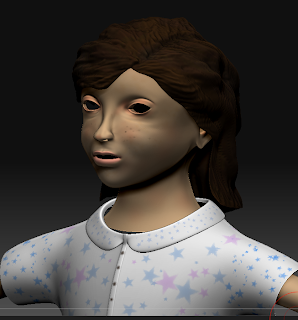This is so far the most complicated shot I've lit. Global illumination was taking way too long to render. If I used GI all the way, then I would never be able to finish my renders. Thus, I decided to fake GI using multiple light sources simulating bounce and specular lights. This shot has 16 render passes. The background outside the window, the kerosene flames and the interactive lighting on the book was all added during compositing in Shake. Alan and the rest felt that the glass was too clear and new and thus I made it translucent. This is the node tree from Shake:
Again, this was the most complicated script I've done. I realized that in Maya, I forgot to set up mask passes for the table elements and characters. Hence, the composite didn't turn out correctly. So I had to use the existing passes that I had rendered and extract alpha channels out of them and do a bit of rotoscoping to create mattes for some of the layers. In the end, it worked.
I was reflecting about the choice I took to use Shake as my compositing tool for this project and I can't help feeling relieved about the decision I made. If I had stuck to After Effects, all these matte extractions would have been tedious and confusing with the whole layer system in AE since it uses track mattes which requires two layers and then pre-compositing on top of that. I can imagine how messy and confusing my workflow would have been. The node-based compositing workflow makes my composite very organized and easy to troubleshoot. However, the downside of Shake is that it doesn't have many of the filters that AE has such as glows or lens flares or those Cycore Effects that come free with AE. I have to manually create some of these things procedurally, but hey, that's the whole fun part about Shake! :)
Anyway, do give comments on the lighting and how it makes you feel as the viewer and what kind of mood is emoted to you.









































